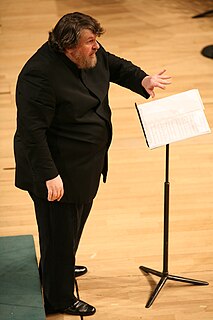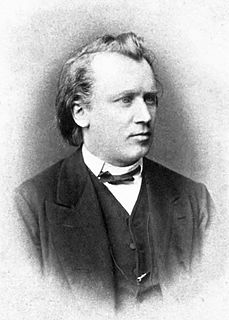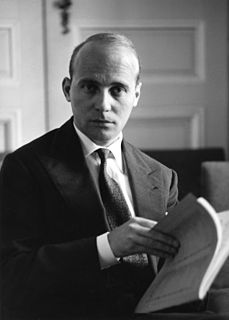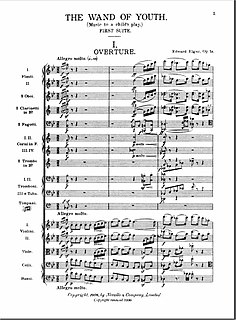Related Research Articles
The Pomp and Circumstance Marches, Op. 39, are a series of five marches for orchestra composed by Sir Edward Elgar. The first four were published between 1901 and 1907, when Elgar was in his forties; the fifth was published in 1930, a few years before his death; and a sixth, compiled posthumously from sketches, was published in 1956 and in 2005–2006. They include some of Elgar's best-known compositions.

Stuart Oliver Knussen was a British composer and conductor.

Capriccio espagnol, Op. 34, is the common Western title for a five movement orchestral suite, based on Spanish folk melodies, composed by the Russian composer Nikolai Rimsky-Korsakov in 1887. Rimsky-Korsakov originally intended to write the work for a solo violin with orchestra, but later decided that a purely orchestral work would do better justice to the lively melodies. The Russian title is Каприччио на испанские темы.

Isang Yun, also spelled Yun I-sang, was a Korean-born composer who made his later career in West Germany.

Symphony No. 2 in D major, Op. 73, was composed by Johannes Brahms in the summer of 1877, during a visit to Pörtschach am Wörthersee, a town in the Austrian province of Carinthia. Its composition was brief in comparison with the 21 years it took Brahms to complete his First Symphony.

The English Cat is an opera in two acts by Hans Werner Henze to an English libretto by Edward Bond, based on Les peines de coeur d'une chatte anglaise by Honoré de Balzac. The opera was first performed in a German translation by the Stuttgart Opera at the Schlosstheater Schwetzingen at the Schwetzingen Festival on 2 June 1983. The French premiere was at the Opéra-Comique, Paris in 1984. The first performance using the original English text was at Santa Fe on 13 July 1985. The UK premiere was at the Leith Theatre, Edinburgh, on 19 August 1987. A revised version was performed at Montepulciano in 1990 and this was given in London in 1991.
Concertino is the diminutive of concerto, thus literally a small or short concerto.

The Bassarids is an opera in one act and an intermezzo, with music by Hans Werner Henze to an English libretto by W. H. Auden and Chester Kallman, after Euripides's The Bacchae.

The Wand of Youth Suites No. 1 and No. 2 are works for full orchestra by the English composer Edward Elgar. The titles given them by Elgar were, in full: The Wand of Youth First Suite, Op. 1a (1869–1907) and The Wand of Youth Second Suite,.

Hans Werner Henze composed the nine Sacred Concertos that comprise his Requiem over the course of three years from 1991 to 1993 on commissions from the London Sinfonietta, Suntory Corporation for the NHK Philharmonic, and Westdeutscher Rundfunk, Cologne. The first movement, Introitus: Requiem Aeternam was commissioned by the London Sinfonietta as part of a memorial concert for Artistic Director Michael Vyner who died on 20 October 1989. In addition to Henze, the London Sinfonietta also commissioned seven other prominent composers to write works in Vyner's memory to make up the program which was performed on the 6 May 1990.
The Symphony No. 3 by Arnold Bax was completed in 1929. It was dedicated to Sir Henry Wood and is perhaps the most performed and most immediately approachable of Bax's symphonies.
The Symphony No. 4 by Arnold Bax was completed in 1930 and dedicated to Paul Corder. It was inspired by Bax's love of the sea and premiered in 1931 by British conductor Basil Cameron and the San Francisco Symphony Orchestra.

The Symphony No. 8, Op. 124 by Malcolm Arnold was finished in November 1978.
Robert Comrie Turner, was a Canadian composer, radio producer, and music educator. He graduated with a bachelor's degree in music from McGill University in 1943. While there he studied with Douglas Clarke and Claude Champagne. He continued his studies briefly at Colorado College in 1947, where he met his wife, percussionist Sara Scott. They married in 1949. In 1947, Turner transferred to Peabody College in Nashville, Tennessee, where he studied with Roy Harris. He graduated in 1950 with a master's degree. During this time, Turner spent two summers studying with Herbert Howells and Gordon Jacob at the Royal College of Music and one summer at the Berkshire Music Center at Tanglewood studying with Olivier Messiaen. He returned to McGill University in 1951, graduating with a doctorate two years later.
Rustic Wedding Symphony, Op. 26 is a symphony in E flat major by Karl Goldmark, written in 1875, a year before his renowned Violin Concerto No. 1. The symphony was premiered in Vienna on 5 March 1876, conducted by Hans Richter. Johannes Brahms, who was a frequent walking companion of Goldmark's, and whose own Symphony No. 1 was not premiered until November 1876, told him "That is the best thing you have done; clear-cut and faultless, it sprang into being a finished thing, like Minerva from the head of Jupiter". Its first American performance was at a New York Philharmonic Society concert, conducted by Theodore Thomas on 13 January 1877.
Marti Epstein is an American composer. She is Professor of Composition at Berklee College of Music and the Boston Conservatory at Berklee.
The Symphony No. 4 by Walter Piston is a symphony dating from 1950.
The Third Symphony by Alfred Schnittke was his fourth composition in the symphonic form, completed in 1981.
Hans Werner Henze's Symphony No. 4 was written in 1955. It was premiered at the Hochschule für Musik, Berlin on 9 October 1963 by the Berlin Philharmonic Orchestra conducted by the composer.
The Vokalsinfonie by Hans Werner Henze was written in 1955. The sung text is by German writer Heinz von Cramer.